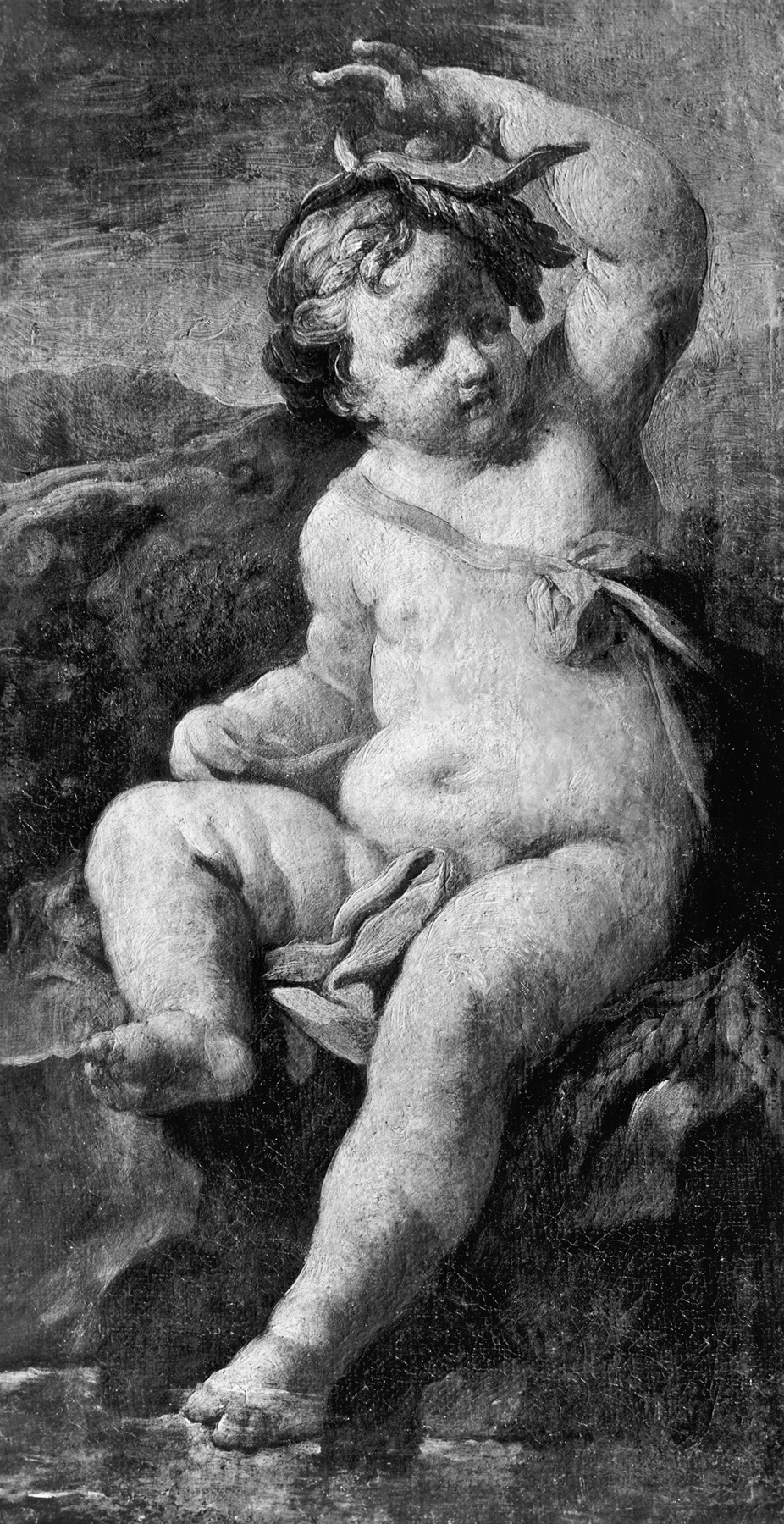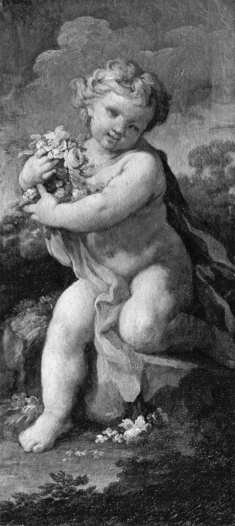Allegory of Summer
(Baroque Europe )
Conca represents the different character of the four seasons through one of the most favored artistic motifs of the 18th century, the "putto" (embodying the spirit of a little child). The playful, tender, and fleshy figures convey a light mood. As allegorical personifications here, they act out seasons through typical activities. Seated at the fire of a brazier, Winter wraps himself up against the cold (Walters 37.1791); Spring holds a wreath of flowers (Walters 37.1724); Summer shades his head with a leaf against the heat while cooling his foot in a stream; and Autumn, like a little Bacchus (the ancient god of wine), holds grapes, representing the harvest (Walters 37.1792). The charming series was surely intended to decorate a small room, perhaps a dressing room.
For more information on this series, please see Federico Zeri's 1976 catalogue no. 433, pp. 545-546.
Provenance
Provenance (from the French provenir, 'to come from/forth') is the chronology of the ownership, custody, or location of a historical object. Learn more about provenance at the Walters.
Don Marcello Massarenti Collection, Rome [date and mode of acquisition unknown] [1881 catalogue: no. 151; 1897 catalogue: no. 292, as Carlo Maratta]; Henry Walters, Baltimore, 1902, by purchase; Walters Art Museum, 1931, by bequest.
Geographies
Italy, Naples (Place of Origin)
Measurements
H: 18 11/16 x W: 9 3/4 in. (47.5 x 24.7 cm)
Credit Line
Acquired by Henry Walters with the Massarenti Collection, 1902
Location in Museum
Accession Number
In libraries, galleries, museums, and archives, an accession number is a unique identifier assigned to each object in the collection.
In libraries, galleries, museums, and archives, an accession number is a unique identifier assigned to each object in the collection.
37.1744





